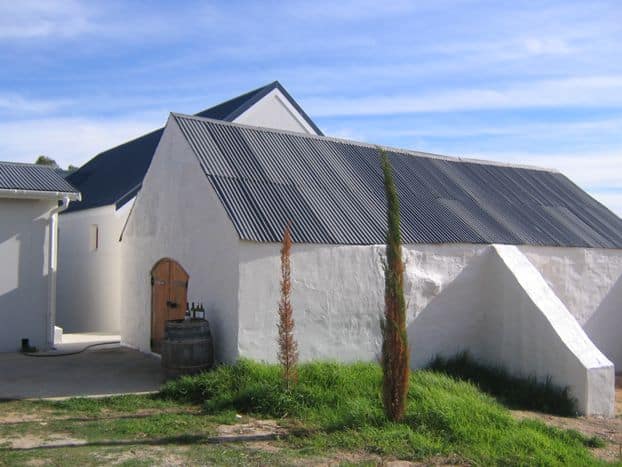Tim James: Two decades of Swartland revolution
By Tim James, 26 July 2019

1
What does one do at a sleepless 3.13 AM (and whoever it was that pointed out that the numbers on the clock in such circumstances are invariably odd was horribly correct), apart from shoving away the dog and think of missed opportunities? Missed duties, even. Someone as involved as I have been in charting the evolution of the modern Swartland, and its centrality in the developing Cape wine revolution, should have noticed last year that the reinvented Swartland was born 20 years previously.
The first vintage of the Spice Route Wine Company was 1998, offering the first ambitious wines of Charles Back (and briefly a few partners) and his young winemaker, Eben Sadie, lured, on the advice of John Platter I believe, with not much trouble from Romansrivier Kelder.
In fact, I realised (round about 3.33 AM), 2019 is stuck between two years which could plausibly count as giving birth to the new Swartland. Because, although Charles Back and Spice Route suggested the idea, they did little more than sketch the possibilities. Two Swartland wines from the more dramatic millennial year of 2000 look in retrospect to be more like the real start of the big adventure: Sadie Family Columella and The Observatory, the latter made by Tom Lubbe, who for a while assisted Eben at Spice Route.
The Observatory didn’t last out the decade, but it was an important, innovative label (consider a Carignan-Syrah 2002) – not least because Tom Lubbe’s wines reinforced the news that great things were possible from Swartland terroir, and, perhaps even more presciently, from a new way of making wine: fresher, purer, with fewer winemaker interventions between grape and bottle. So Columella, and then the wholly innovative Sadie Palladius white blend from 2002, were the wines destined to have the greatest effect on Cape wine. Twenty vintages of Columella have now been taken in – though the last of them is still in pieces awaiting assembly.

It was the old, thick-walled little shed which Sadie rented on the Paardeberg which became the nucleus of the revolution. No far distant, by 2006 I think it was, Tom Lubbe, who’d previously made his wine in Cape Town, was vinifying at Boschgarsfontein, the Paardeberg property his family had bought, and which he (assisted by his sister Catherine) was farming organically, even biodynamically. It is no coincidence that it was at Boschgarsfontein that Craig Hawkins of Testalonga began his experiments with fermenting – and maturing – white wines on their skins: the first vintage of El Bandito was 2008. Before he became winemaker at Lammershoek (and established the revolution there on a firmer footing), he was assisting with The Observatory, by then in something like a state of collapse with Tom Lubbe having moved to Roussillon in southern France.
Already in 2007 the Swartland was gaining international attention. I had written enthusiastically about it in the London-based World of Fine Wine, and in that year I took two important British journalists (Stephen Spurrier and Neil Beckett, who were judging at the Trophy Wine Show) on a short tour of the Paardeberg and to a tasting of Swartland wines at Boschgarsfontein – Jancis Robinson was meant to be there too, but had arrived in Cape Town late as she was unwell.
The revolution was consolidating itself on the Paardeberg. Most notably Adi Badenhorst had established himself on a farm that he and his cousin had bought in 2008. (The detailed story of the Paardeberg remains to be written, but deserves charting.) Producers from elsewhere were increasingly buying in Swartland grapes – especially the old vine Chenin blanc in which the area was rich. Young winemakers were joining the Swartland avant garde and founding new labels: amongst the auspicious early start-ups, Donovan Rall’s first vintage was 2008, David and Nadia Sadie’s was 2010.
And the Swartland revolution was simultaneously radiating outwards from the Paardeberg – which had possibly become the best-known Cape “wine mountain” internationally. A small winery, Wildehurst, was established in the centre of the vast Swartland, at Koringberg. The Mullineux pair had been making Swartland wine for a few years (and from an early date they’d made a Swartland Chenin for Tulbagh Mountain Vineyards) and established an important bridgehead to the Riebeekberg when they opened a winery in Riebeek Kasteel in 2010. Boekenhoutskloof bought Porseleinberg in 2009. The Swartland Revolution (with a capital R) was a serious annual wine festival attracting international attention. Rosa Kruger was establishing vineyards for Anthonij Rupert on the Kasteelberg and seeking out obscure old vineyards. A whole new generation was emerging.
These are just a few of the important moments in the last 20 years of the Swartland that I’d remembered and was mulling over at 4.17 AM.
- Tim James is one of South Africa’s leading wine commentators, contributing to various local and international wine publications. He is a taster (and associate editor) for Platter’s. His book Wines of South Africa – Tradition and Revolution appeared in 2013.
Comments
1 comment(s)
Please read our Comments Policy here.







Hennie Taljaard | 27 July 2019
Hi Tim, don’t underestimate your contribution to the emergence of the Swartland movement. It was of course about more than the region, but also a different approach to vinivication and respect for out-of-fashion/neglected cultivars. It was because of you that I first heard about the revolution and names like Sadie. The whole thing instantly appealed to me, but it was only when I started drinking the wines that I got to understand the importance of it all. Soldier on!